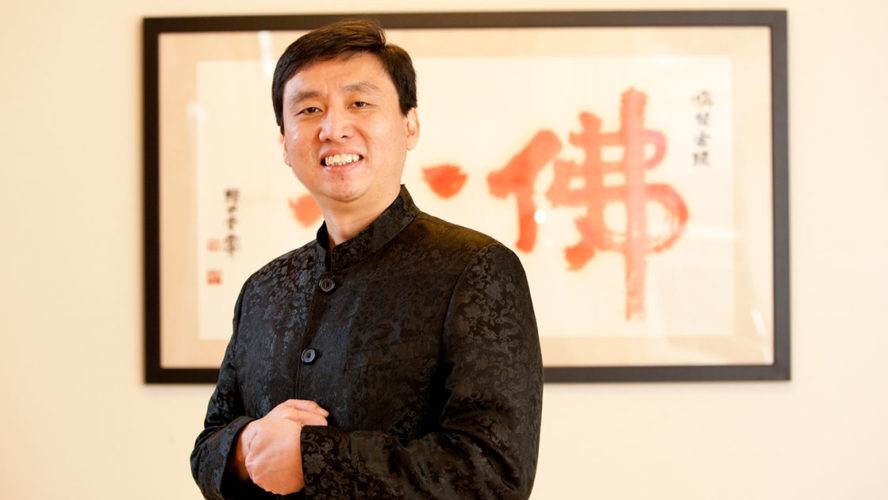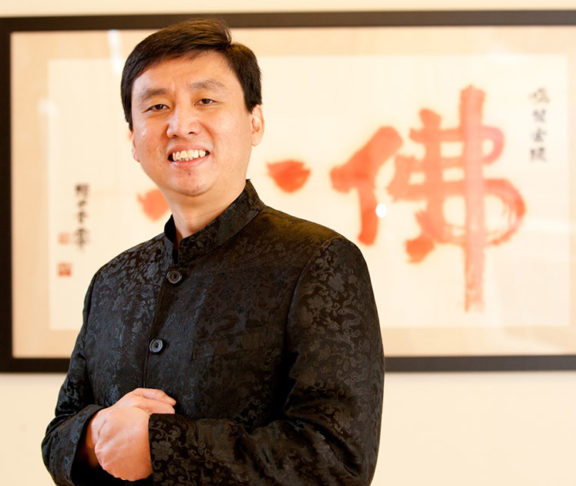Chade-Meng Tan, celebrated thought leader, motivator, and former Google employee, wants businesses to ditch the dog-eat-dog incentive model in favor of a more compassionate one.
In a time when employees are quitting the workforce in historic numbers and “burnout” is the word of the day every day, it’s time for corporate culture to rethink how business is done. Tan argues that an empathetic approach that emphasizes human beings’ social instincts creates better long-term outcomes — for the employees, for the consumers, and for the bottom line. Goodness equals good business.
“Human beings are ultrasocial creatures,” says Tan, which favors win-win situations. “For example, say two cavemen lived near each other, and one kept robbing food from the other, then neither would thrive. However, if the two cavemen often shared food with each other, eventually, they would like each other enough to hunt together and protect each other. In the long term, they would do much better than the preceding two cavemen.” This principle also applies to business. Companies thrive when they respect their suppliers and serve their customers rather than cutting corners and chasing the quickest, easiest buck.
The power of compassion
According to Tan, compassion for employees as well as customers helps companies thrive in a myriad of ways. “One is by greatly increasing team effectiveness,” he says. “At Google, we discovered that one of the most important qualities that all high-functioning teams possess is psychological safety. Psychological safety allows people to feel safe enough to honestly admit their own failings to their team members. As a result, those teams spend time productively understanding problems and solving them together, rather than wasting their time playing politics, hiding information from each other, and making each other look bad.”
Another way that compassion helps companies thrive is by creating a loyal consumer base. “You get loyal customers because you look out for their best interest, which means for example, you don’t sell them what you know they don’t need, and you don’t lower the quality of stuff under the hood. Over time, they learn to trust you, and trust commands a business premium.”
Implementing goodness
So, how can companies implement “goodness” into their business models? According to Tan, compassion must be built into an organization’s incentive structure. If managers incentivize unethical behavior just because it is profitable, the company will grow into an unethical organization, which is bad for business in the long run.
“There is no one initiative an organization can take that would be sufficient to achieve compassion in the workplace,” Tan says. “It needs to be done systemically. It begins with the company deciding for themselves what it means to understand people, feel for them, and want to help them, and then aligning incentive structures around it.”
Tan’s first recommendation is simple: take the time to learn how employees are actually feeling and what they need. “One large company I recently worked with took precisely this approach,” he says. “As the pandemic dragged on, they tried to understand what the employees needed. More importantly, they asked them how they felt. The company learned what the employees missed the most about going to work is human connection. And so, in response, the company organized virtual events to help people connect with each other again, and in those events, they invited speakers like myself to address the topics that they were most concerned with.”
On the consumer side, Tan always recommends putting the needs of the customers first. For instance, back when Google was still a small start-up, the standard revenue model on the internet was in the form of annoying banner ads, which founder Larry Page opposed because they did not serve the user. “Eventually, Larry said, ‘Look, Google is about serving the user with useful information. Therefore, if we can figure out how to make ads useful information, then [he] would no longer be opposed to Google showing ads,’” Tan recalls. “With that clarity, the Google team worked to figure out how to make ads useful to the user. Later, we found out that by making ads useful, we made a lot more money than the standard banner ads.”
Long-term success
Even though data clearly shows that employee happiness and consumer trust is correlated with greater long-term returns, it’s still hard to find businesses that make compassion a priority. “There are a lot of things business leaders can do that increase profits in the short term but cause enormous harm in the long term,” Tan says. “The biggest problem is that the short-term profits are easily measurable while the long-term harm is well hidden.” Quick cost-saving measures may increase profits initially, but they will result in a poorer product that eventually loses consumer trust.
It’s the same with employees. Even though everyone knows that happier employees lead to better productivity, it may take a while to see the positive effects. “Which also means that if you instead exploit your employees and cause them to be miserable, the short-term bump in productivity is immediately visible, while the long-term costs — poor morale, low loyalty, high staff turnover, higher number of sick days, reduction in creativity, quality and safety issues, dysfunctional teams, etc — take a longer time to surface.”
When it comes to creating the necessary change in incentive structure, Tan says human resources departments have limited power on their own. Instead, change must come from the top. “The key lever that moves corporate culture is deciding what gets incentivized and what gets punished, and top managers are usually the ones with their hands on that lever,” he explains. “One thing HR can do is to create a subculture within HR itself that values higher purpose, inner development, and personal growth. It usually takes a while for the benefits to show up, but once it does, HR can then, using its own example, promote it to the rest of the company.”
Pure profit, fear of punishment, and office politics are generally poor motivators. Working for a higher purpose or meaning, on the other hand, can be a powerful incentive for employees. People would rather work for a company with a mission statement they can believe in, like creating a more eco-friendly and sustainable environment. “If a man was paid to lay bricks, he would have a certain level of motivation. However, if he was laying bricks for what would become a majestic cathedral to honor his God, then his level of motivation would be vastly greater,” Tan explains. “In the same way, if employees know that they are working for the CEO to buy yet another stupid yacht, or merely to increase shareholder value, then it’s just a job. But if they are working in a company that is trying to change the world, or at the very least, create a gentler, kinder planet, the level of motivation can be vastly different.” At the end of the day, the answer is simple. “In the long term, being good is good for business.”

